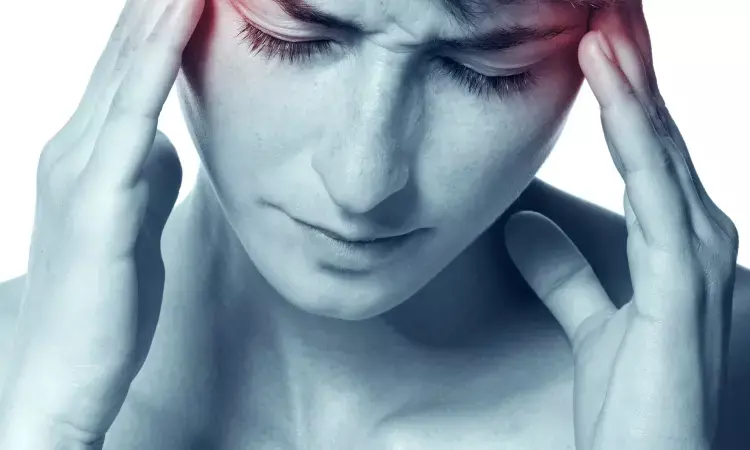- Home
- Medical news & Guidelines
- Anesthesiology
- Cardiology and CTVS
- Critical Care
- Dentistry
- Dermatology
- Diabetes and Endocrinology
- ENT
- Gastroenterology
- Medicine
- Nephrology
- Neurology
- Obstretics-Gynaecology
- Oncology
- Ophthalmology
- Orthopaedics
- Pediatrics-Neonatology
- Psychiatry
- Pulmonology
- Radiology
- Surgery
- Urology
- Laboratory Medicine
- Diet
- Nursing
- Paramedical
- Physiotherapy
- Health news
- Fact Check
- Bone Health Fact Check
- Brain Health Fact Check
- Cancer Related Fact Check
- Child Care Fact Check
- Dental and oral health fact check
- Diabetes and metabolic health fact check
- Diet and Nutrition Fact Check
- Eye and ENT Care Fact Check
- Fitness fact check
- Gut health fact check
- Heart health fact check
- Kidney health fact check
- Medical education fact check
- Men's health fact check
- Respiratory fact check
- Skin and hair care fact check
- Vaccine and Immunization fact check
- Women's health fact check
- AYUSH
- State News
- Andaman and Nicobar Islands
- Andhra Pradesh
- Arunachal Pradesh
- Assam
- Bihar
- Chandigarh
- Chattisgarh
- Dadra and Nagar Haveli
- Daman and Diu
- Delhi
- Goa
- Gujarat
- Haryana
- Himachal Pradesh
- Jammu & Kashmir
- Jharkhand
- Karnataka
- Kerala
- Ladakh
- Lakshadweep
- Madhya Pradesh
- Maharashtra
- Manipur
- Meghalaya
- Mizoram
- Nagaland
- Odisha
- Puducherry
- Punjab
- Rajasthan
- Sikkim
- Tamil Nadu
- Telangana
- Tripura
- Uttar Pradesh
- Uttrakhand
- West Bengal
- Medical Education
- Industry
Both Cluster headaches and migraine have strong links to circadian system

USA: A recent research article published in Neurology Journal has concluded that cluster headaches have a prominent circadian pattern of attacks with a clear peak between 21:00 and 03:00 (circannual peaks in the spring and autumn), While for migraine, it is a clear trough between 23:00 and 07:00 (circannual rise from April to October).
It is already known that Cluster headaches and migraine have circadian features at cellular systems and behavioural levels. A thorough understanding of this informs their pathophysiologies.
For cluster headache, the meta-analysis found a circadian pattern of headache attacks in 71% of people. Attacks peaked in the late hours of the night to early hours of the morning. During the year, people had more attacks in the spring and fall. On the genetic level, cluster headache was associated with two main circadian genes, and five of the nine genes that increase the likelihood of having cluster headache are genes with a circadian pattern of expression.
People with cluster headache also had higher cortisol levels and lower melatonin levels than people without cluster headache.
For migraine, the meta-analysis showed a circadian pattern of attacks in 50% of people. While the peak for attacks during the day was broad, ranging from late morning until early evening, there was a circadian low point during the night when few attacks happened. Migraine was also associated with two core circadian genes, and 110 of the 168 genes associated with migraine were genes with a circadian pattern of expression.
People with migraine had lower levels of melatonin in their urine than people without migraine. In addition, melatonin levels were lower during a migraine attack.
In a recent study, researchers catalogued circadian features at three levels:
- Behavioural: circadian timing, time of day, time of year, and chronotype.
- Systems: relevant brain areas where Clock controlled genes (CCG) are active, melatonin and corticosteroid levels
- Cellular: core circadian genes and Clock Controlled Genes.
In this study, apart from systematic review/meta-analysis, researchers also performed genetic analysis for genes.
They found 1513 studies. Seventy-two studies met the inclusion criteria. They found 16 genome-wide association studies (GWAS), one non-human primate study, and 16 imaging reviews in genetic analysis.
The results could be summarised as follows:
- In Cluster headache, across 16 studies, meta-analyses of circadian pattern of attacks in 3490 participants, constituting 70 %, demonstrated peaks between 21:00-03:00 and circannual peaks in spring and autumn. The lower melatonin and higher cortisol levels were reported at the system level. There was an association between cluster headache and core circadian genes CLOCK and REV-ERBα; five (of the nine) susceptibility genes were clocked controlled genes or CCGs at the cellular level.
- In Migraine, Behaviorally, meta-analyses across eight studies showed a circadian pattern of attacks in 2698 participants, constituting 50.1% with a circadian trough between 23:00-07:00 clearly and a broad circannual peak between April-October. There was an association between Migraine and core circadian genes CK1δ and RORα, and 110 (of the 168) susceptibility genes were CCGs at the cellular level. There were lower urinary melatonin levels at the systems level.
Discussing further, Cluster headaches and migraine are highly circadian at multiple levels. This reinforces the importance of the hypothalamus.
They said, “Our review has provided a pathophysiological foundation for circadian-targeted research into these disorders.”
Further reading:
Circadian Features of Cluster Headache and Migraine: A Systematic Review, Meta-analysis, and Genetic Analysis Barlas Benkli et al. Neurology Mar 2023, 10.1212/WNL.0000000000207240; DOI: 10.1212/WNL.0000000000207240
BDS, MDS in Periodontics and Implantology
Dr. Aditi Yadav is a BDS, MDS in Periodontics and Implantology. She has a clinical experience of 5 years as a laser dental surgeon. She also has a Diploma in clinical research and pharmacovigilance and is a Certified data scientist. She is currently working as a content developer in e-health services. Dr. Yadav has a keen interest in Medical Journalism and is actively involved in Medical Research writing.
Dr Kamal Kant Kohli-MBBS, DTCD- a chest specialist with more than 30 years of practice and a flair for writing clinical articles, Dr Kamal Kant Kohli joined Medical Dialogues as a Chief Editor of Medical News. Besides writing articles, as an editor, he proofreads and verifies all the medical content published on Medical Dialogues including those coming from journals, studies,medical conferences,guidelines etc. Email: drkohli@medicaldialogues.in. Contact no. 011-43720751


